Dopamine Decor with the Volume Turned Down
Four tips for creating joy-inducing spaces without loud colours
One person’s dopamine decorating is another’s don’t-pamine [groan] decor. For the record, I love this space from Cissi Åhlén.
“Dopamine decorating” is everywhere—or at least in every shelter magazine and on every interiors website. It’s generally taken to mean bright colours and lots of them, along with pattern a-go-go and layers of vintage and new, high and low.
The theory is that these poppy hues and lively vignettes stimulate the brain’s production of dopamine, one of the neurotransmitters responsible for creating a sense of pleasure. Indeed, there is evidence that yellow, red, and orange do raise the levels of dopamine and serotonin (another “feel-good” hormone) in people.
But… if you hate yellow, red, or orange, bringing those colours into your home will likely not make you happy. Or if you work amid a buzzy, frenetic atmosphere, coming home to more of the same could well scare your dopamine producers into hiding. And in fact, your neurotransmitters do need downtime; there really can be too much of a good thing. (There’s a wonderful article in the Guardian about anhedonia that touches on this.)
This pattern-packed space by Mark D. Sikes Interiors would certainly make me happy, and its blue-and-white palette isn’t as bold as the more free-ranging colour collections typical of dopamine decorating. For some, however, it might induce anxiety rather than joy.
Regardless of whether you favour loud vibrant colours or quiet earth tones, your home can—and should!—bring you pleasure aplenty. Here are a few ways you can incorporate dopamine decorating even if all things bright and busy aren’t for you.
• Layer on the textures. Decorating should appeal to the tactile as well as the visual senses. As it happens, including a variety of textures in a room is also visually appealing. You can almost feel the softness of sheepskin, alpaca wool, faux fur, and velvet as soon as you see the material. Certainly their association with childhood winter evenings spent snuggling in a cosy blanket, plush toy by one’s side, whilst sipping hot cocoa contributes to their dopamine-inducing properties. Just be sure not to overdose on plushness. It’s the contrast with other materials—live-edge wood tables, sleek silk upholstery, lacquered lamps, brick fireplaces, crisp linen curtains—that heightens their appeal.
Hunt Slonem’s bunnies cannot fail to lift one’s mood. But let’s not overlook the power of the textures in this room by Liz Walton Home. The plush sheepskins, the tasseled linens, the bobbins of the beds, the sleek mirrored dresser… bliss! Photo by Jason Sandy/Angle Eye Photography.
• Add some patterns—quiet ones. All solids and no prints make for a boring room. You can ease into the wonderful world of patterns with stripes, a pattern for those who think they hate pattern.
Anne Hepfer complemented the conspicuous stripes of the upholstered beds with the rug’s subtler striations and the horizontal ridges of the wall’s panelling. Virtually no colour, but plenty of joy.
Or go ahead with something bolder or more pictorial in your chosen palette. If you’re wary, start small and inexpensive with a throw pillow, a vase, a lampshade, placemats. But do start—you will be astounded at the difference it will make and by how much fun you can have selecting patterns.
These monkeys in a muted palette are charming yet serene… until you look a bit closer, that is. The wallpaper is Drunk Monkeys by Astek Home, and I cannot express how happy it makes me. The room is that of Redditor freshfriedpickles.
• Get into shapes. Perhaps the most humourless of geometric concepts, straight lines and right angles dominate most rooms. In contrast, curves are relaxed, at times even whimsical, and always pleasurable. A smile, after all, is a curve. (At least for most people; the corners of my lips refuse to turn upward but instead stretch farther out when I’m ostensibly smiling. It’s a curse.) Increase a room’s smile factor by adding traditional curves—a camelback settee, an oval mirror, round-back Louis XVI chairs—or more unconventional ones. I guarantee you that a semicircular sofa will spur a burst of dopamine every time you see it.
How pleasure-inducing is the curvaceous couch in this room designed by The Habitat Collective? The quirky curves of the floor lamps add to the light-hearted vibe, balancing out the more “serious” elements such as the marble table and the herringbone floor.
Beyond curves, consider triangular tables, animal-shape lamps, asymmetrical shelving units… any shape that’s unexpected and introduces a sense of play into a room.
The chair and lamp by Roman Plyus are nothing if not playful—proof that dopamine decorating isn’t reliant on bright colours.
• Display collections. Surrounding ourselves with things we love is the surest way to bring joie to our vivre. Whenever I move, I unpack my books and rearrange them on the bookcases before tackling the boxes with my kitchenware, bedding, and other so-called essentials, because for me, being able to see my books is essential. Whether it’s family photographs, perfume bottles, Sindy dolls, or baseball cards, if they make you happy, display them where you can see them. Happiness is all but guaranteed.


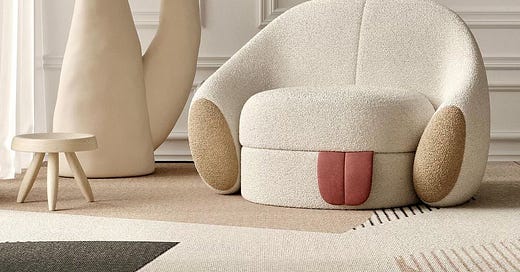

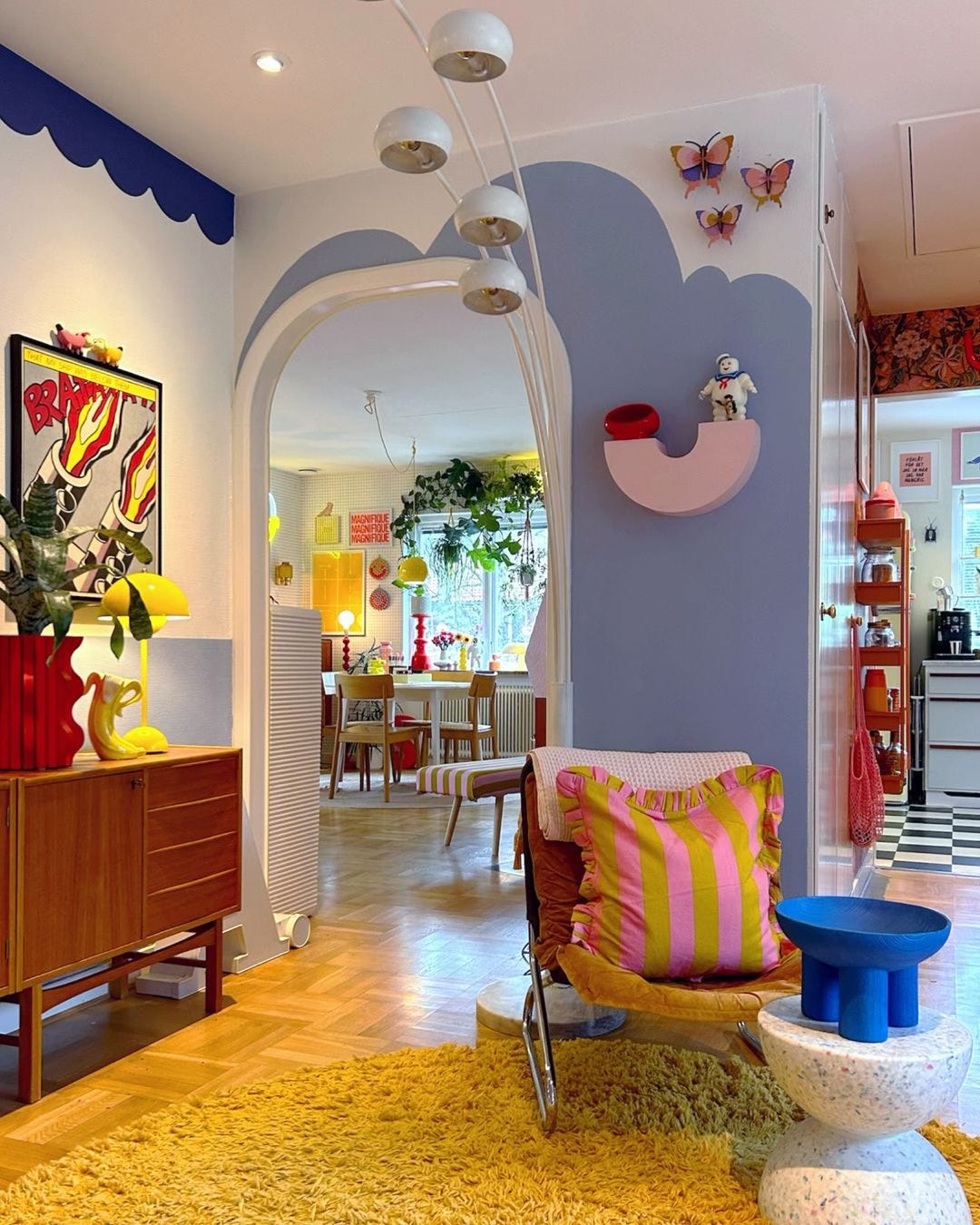
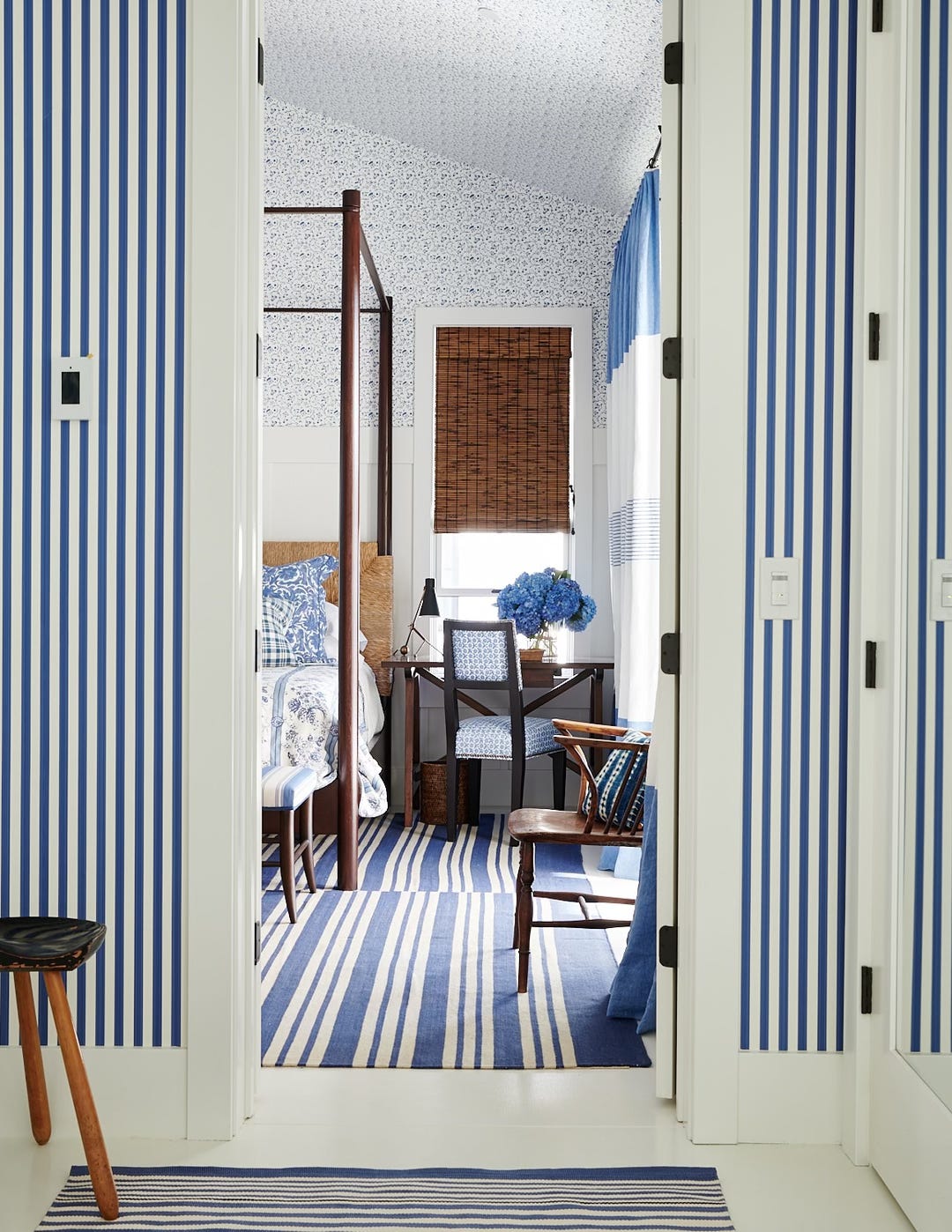

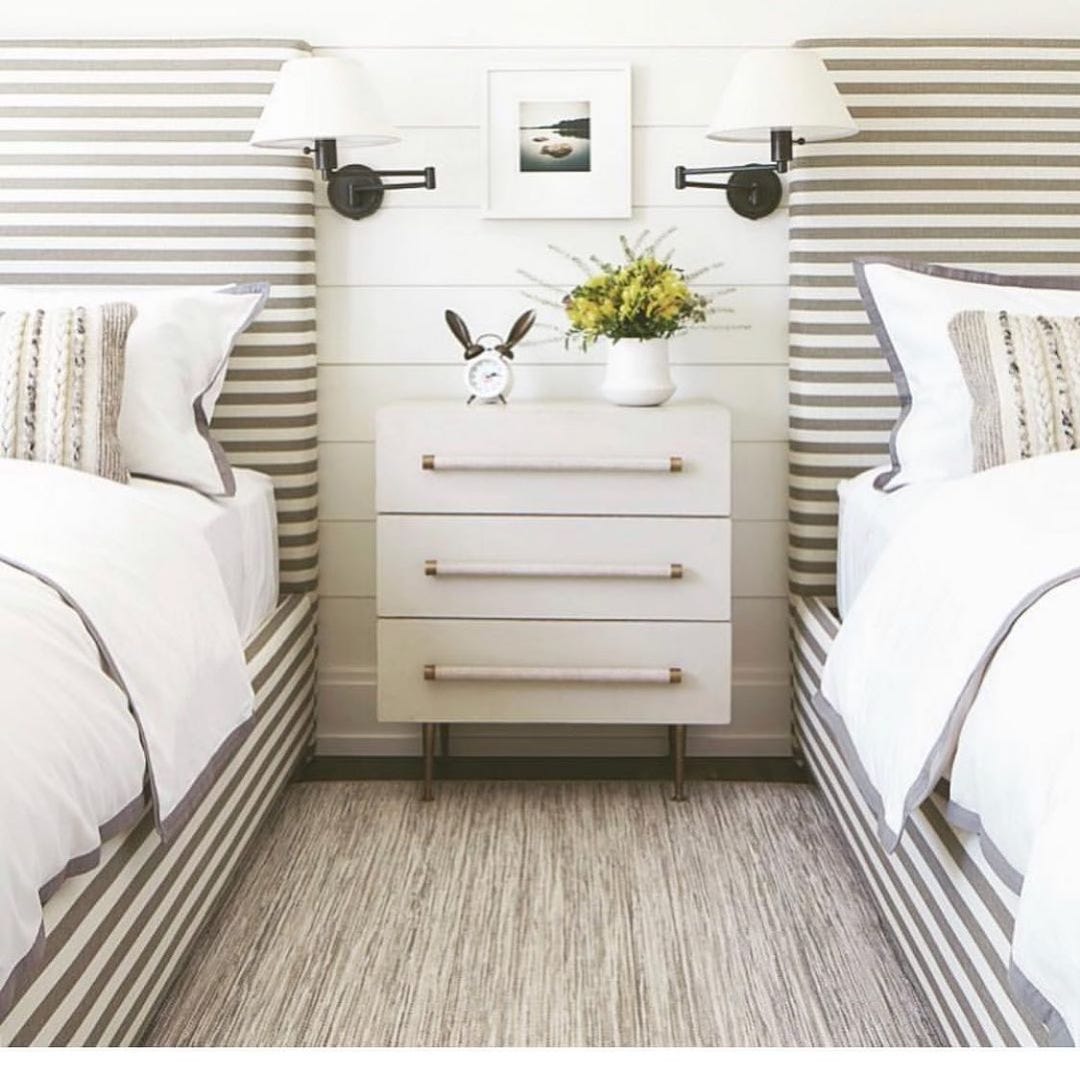

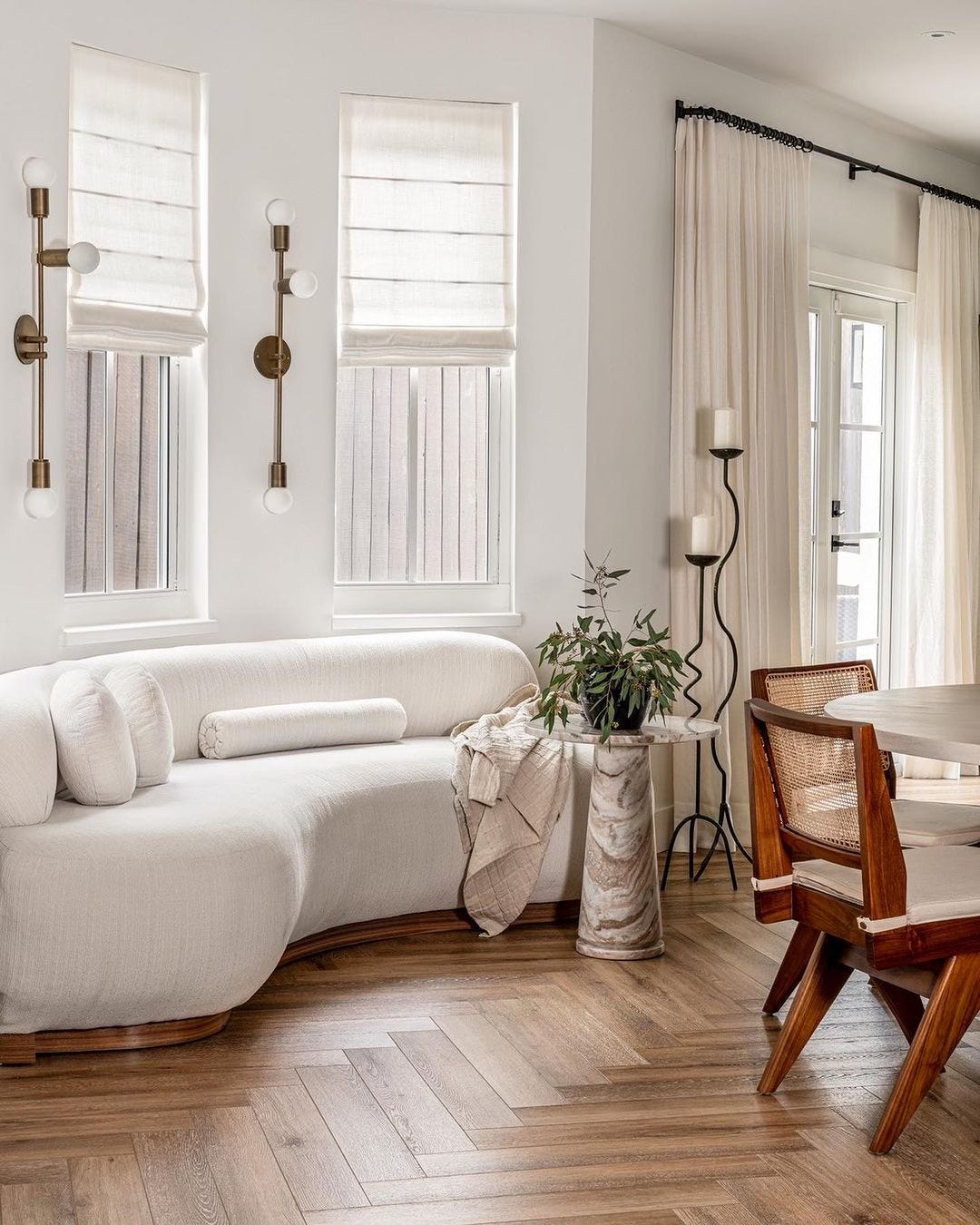

It took me three days to realize that chair was a dog.